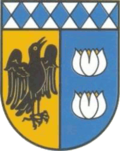Franking | |
|---|---|
 | |
| Coordinates: 48°02′00″N12°55′00″E / 48.03333°N 12.91667°E | |
| Country | Austria |
| State | Upper Austria |
| District | Braunau am Inn |
| Government | |
| • Mayor | Josef Lasser (ÖVP) |
| Area | |
• Total | 10.46 km2 (4.04 sq mi) |
| Elevation | 457 m (1,499 ft) |
| Population (2018-01-01) [2] | |
• Total | 953 |
| • Density | 91.1/km2 (236/sq mi) |
| Time zone | UTC+1 (CET) |
| • Summer (DST) | UTC+2 (CEST) |
| Postal code | 5131 |
| Area code | 06277 |
| Vehicle registration | BR |
| Website | www.franking.ooe.gv.at |
Franking is a municipality in the district Braunau am Inn in the Austrian state of Upper Austria.


